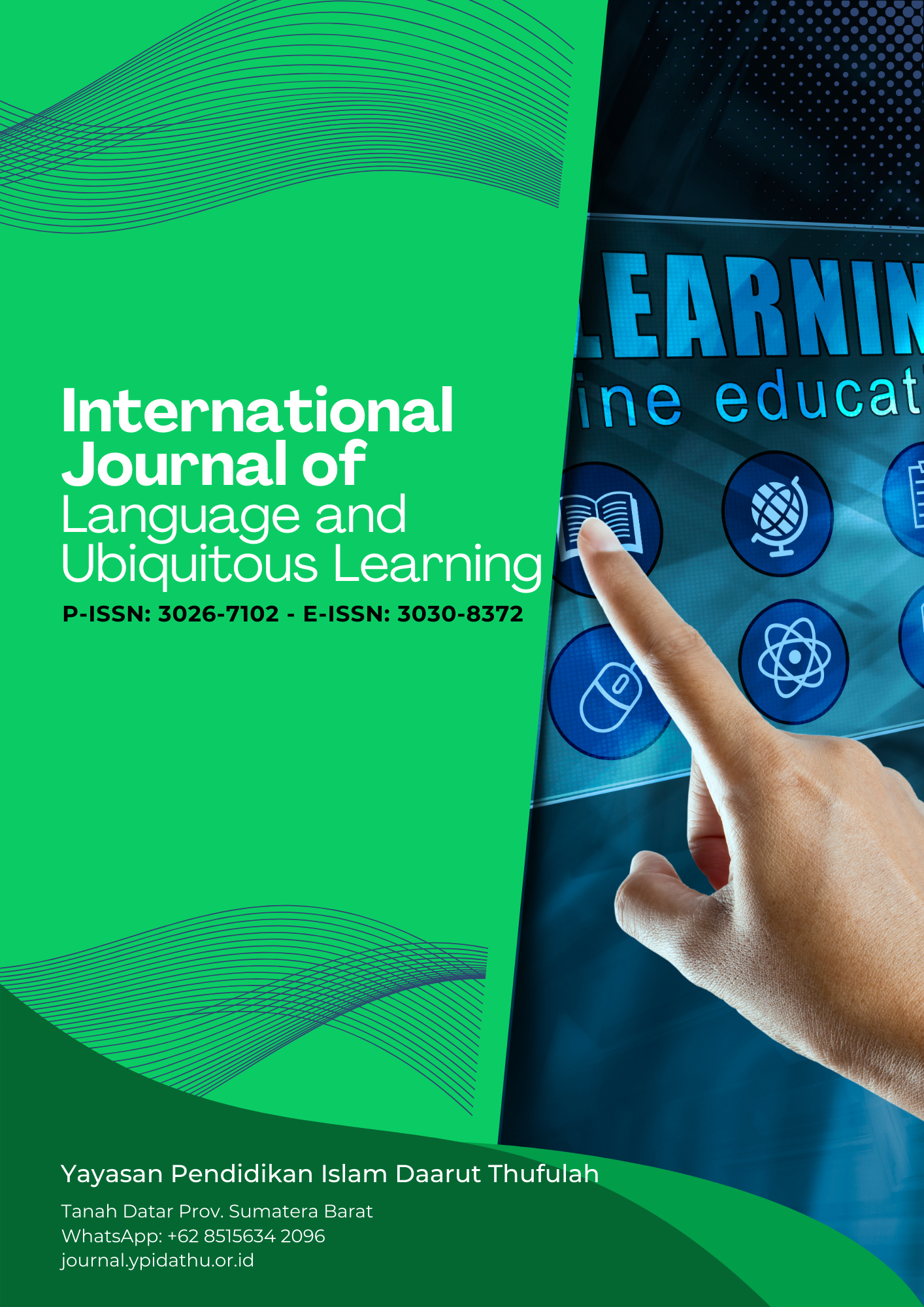The Effectiveness of the Use of Number Smart Board Learning Media to Improve Early Childhood Numeracy Skills
Abstract
Background. Learning in early childhood is an important foundation in the development of cognitive abilities, especially in numeracy skills. However, challenges in teaching the concept of counting effectively are often faced by educators. Interesting learning media, such as number smart boards, are expected to help overcome this obstacle. This media is designed to make it easier for children to understand the concept of numbers and basic operations of mathematics through fun and interactive methods.
Purpose. This study aims to test the effectiveness of the use of number smart board learning media in improving numeracy skills in early childhood. In addition, this study also focuses on how this media affects children's motivation to learn and whether there is a significant difference between the use of this media and conventional learning methods.
Method. This study uses a quantitative approach with an experimental design. The subjects of the study were children aged 4-6 years in a kindergarten who were divided into two groups, namely an experimental group that used the media of a number smart board and a control group that used traditional learning methods. Data collection was carried out through observations, numeracy tests, and questionnaires to measure children's motivation to learn.
Results. The results showed that children who learned to use a number smart board experienced a significant improvement in numeracy compared to the control group. In addition, the motivation to learn in the experimental group was also seen to be higher.
Conclusion. The use of number smart board learning media has been proven to be effective in improving early childhood numeracy skills. This media is also able to increase children's learning motivation, making it an effective alternative to conventional learning methods.
Full text article
References
Abdel?Basset, M., Manogaran, G., & ... (2019). Internet of things in smart education environment: Supportive framework in the decision?making process. Concurrency and …, Query date: 2024-09-28 07:24:57. https://doi.org/10.1002/cpe.4515
Adorjan, A. (2023). Towards a Researcher-in-the-loop Driven Curation Approach for Quantitative and Qualitative Research Methods. Communications in Computer and Information Science, 1850(Query date: 2023-11-30 23:13:48), 647–655. https://doi.org/10.1007/978-3-031-42941-5_58
Agustin, F., Oganda, F. P., Lutfiani, N., & Harahap, E. P. (2020). Manajemen Pembelajaran Daring Menggunakan Education Smart Courses. Technomedia Journal, 5(1 Agustus), 40–53.
Al-Hendawi, M. (2023). Validation of the Arabic Version of Strengths and Difficulties Questionnaire in Early Childhood Education in Qatar. Children, 10(1). https://doi.org/10.3390/children10010146
AlZu’bi, S., Hawashin, B., Mujahed, M., Jararweh, Y., & ... (2019). An efficient employment of internet of multimedia things in smart and future agriculture. Multimedia Tools and …, Query date: 2024-09-28 07:24:57. https://doi.org/10.1007/s11042-019-7367-0
Bauer, G. R. (2019a). Advancing quantitative intersectionality research methods: Intracategorical and intercategorical approaches to shared and differential constructs. Social Science and Medicine, 226(Query date: 2023-11-30 23:13:48), 260–262. https://doi.org/10.1016/j.socscimed.2019.03.018
Bauer, G. R. (2019b). Advancing quantitative intersectionality research methods: Intracategorical and intercategorical approaches to shared and differential constructs. Social Science and Medicine, 226(Query date: 2023-12-14 18:25:27), 260–262. https://doi.org/10.1016/j.socscimed.2019.03.018
Bursali, H., & Yilmaz, R. (2019). Effect of augmented reality applications on secondary school students’ reading comprehension and learning permanency. Computers in Human Behavior, Query date: 2024-09-28 07:24:57. https://www.sciencedirect.com/science/article/pii/S0747563219300445
Chan, K., & Zary, N. (2019). Applications and challenges of implementing artificial intelligence in medical education: Integrative review. JMIR medical education, Query date: 2024-09-28 07:24:57. https://mededu.jmir.org/2019/1/e13930
Furima, Y., Naibaho, J., & ... (2022). Aplikasi Belajar Dan Bermain Untuk Anak Usia Dini Menggunakan Kodular: Learning and Playing Applications for early Childhood Using Kodular. JISTECH: Journal of …, Query date: 2024-05-12 21:14:12. https://jurnal.unipa.ac.id/index.php/istech/article/view/63
Hong, S. (2021). A cord of three strands: A new approach to parent engagement in schools. books.google.com. https://books.google.com/books?hl=en&lr=&id=RX4fEAAAQBAJ&oi=fnd&pg=PT6&dq=number+smart+board+learning+media&ots=YAjC2o4vYY&sig=jSnBA-qLfkq3EgveMlz40AJNSvA
Imoize, A., Adedeji, O., Tandiya, N., & Shetty, S. (2021). 6G enabled smart infrastructure for sustainable society: Opportunities, challenges, and research roadmap. Sensors, Query date: 2024-09-28 07:24:57. https://www.mdpi.com/1424-8220/21/5/1709
Knox, J. (2020). Artificial intelligence and education in China. Learning, Media and Technology, Query date: 2024-09-28 07:24:57. https://doi.org/10.1080/17439884.2020.1754236
Lassoued, Z., Alhendawi, M., & Bashitialshaaer, R. (2020). An exploratory study of the obstacles for achieving quality in distance learning during the COVID-19 pandemic. Education sciences, Query date: 2024-09-28 07:24:57. https://www.mdpi.com/2227-7102/10/9/232
Manca, S. (2020). Snapping, pinning, liking or texting: Investigating social media in higher education beyond Facebook. The Internet and Higher Education, Query date: 2024-09-28 07:24:57. https://www.sciencedirect.com/science/article/pii/S1096751619304257
Nahdi, D. S. (2020). Pre-service teacher’s ability in solving mathematics problem viewed from numeracy literacy skills. Elementary Education Online, 19(4), 1902–1910. https://doi.org/10.17051/ilkonline.2020.762541
Nisar, T., Prabhakar, G., & Strakova, L. (2019). Social media information benefits, knowledge management and smart organizations. Journal of Business Research, Query date: 2024-09-28 07:24:57. https://www.sciencedirect.com/science/article/pii/S0148296318302303
Novaliendry, D., Darmi, R., Hendriyani, Y., Nor, M., & ... (2020). Smart learning media based on android technology. International Journal of …, Query date: 2024-09-28 07:24:57. https://www.ijicc.net/images/vol12/iss11/121109_Novaliendry_2020_E_R.pdf
Pilcher, N. (2023). “Qualitative” and “quantitative” methods and approaches across subject fields: Implications for research values, assumptions, and practices. Quality and Quantity, Query date: 2023-11-30 23:13:48. https://doi.org/10.1007/s11135-023-01734-4
Rao, B., & Kalyani, V. (2022). A study on positive and negative effects of social media on society. Journal of Science &Technology (JST), Query date: 2024-09-28 07:24:57. https://jst.org.in/index.php/pub/article/view/883
Safrudiannur. (2021). Offering an Approach to Measure Beliefs Quantitatively: Capturing the Influence of Students’ Abilities on Teachers’ Beliefs. International Journal of Science and Mathematics Education, 19(2), 419–441. https://doi.org/10.1007/s10763-020-10063-z
Takona, J. P. (2023). Research design: Qualitative, quantitative, and mixed methods approaches / sixth edition. Quality and Quantity, Query date: 2023-11-30 23:13:48. https://doi.org/10.1007/s11135-023-01798-2
Tashakkori, A., Johnson, R., & Teddlie, C. (2020). Foundations of mixed methods research: Integrating quantitative and qualitative approaches in the social and behavioral sciences. Query date: 2024-09-28 07:06:28.
Tlili, A., Hattab, S., Essalmi, F., Chen, N., Huang, R., & ... (2021). A smart collaborative educational game with learning analytics to support English vocabulary teaching. IJIMAI, Query date: 2024-09-28 07:24:57. https://dialnet.unirioja.es/servlet/articulo?codigo=9033446
Windschitl, M., Thompson, J., & Braaten, M. (2020). Ambitious science teaching. books.google.com. https://books.google.com/books?hl=en&lr=&id=iDT-DwAAQBAJ&oi=fnd&pg=PT6&dq=number+smart+board+learning+media&ots=oc2sapdPSQ&sig=I8x-B6F1dMKtr4cNwVeDZfwPtkw
Authors
Copyright (c) 2024 Korlina Makulua, Franklin Dahaklory, Clinton Lumaupuy

This work is licensed under a Creative Commons Attribution-ShareAlike 4.0 International License.





